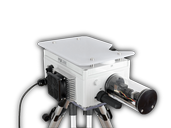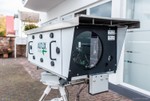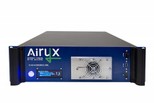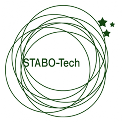 Airyx, founded in 2017, is an innovative high-tech spin-off company from Heidelberg University. Airyx's core business is the development, manufacturing and distribution of gas measuring instruments featuring high accuracy and precision for industrial and research applications worldwide. The Airiyx equipment, based on its patented gas detection method, helps reduce maintenance efforts and provides high stability and low measurement uncertainty errors. Airyx offers customized hardware and software solutions that offer the opportunity to perform specific environmental monitoring regarding emissions from industrial chimneys, emissions from ships, emissions from vehicles on the road even in difficult conditions. | ||
REMOTE SENSING | IN SITU | ||
Passive DOAS SKYSPEC | Active DOAS Open Path | ICAD (Iterative CAvity enhanced DOAS) | |
 The SKYSPEC series of equipment is designed for atmospheric studies and environmental monitoring through the implementation of the Passive DOAS method that analyses direct and diffusely scattered solar radiation in the UV-VIS spectral range. This method allows to retreive the average optical depth of many minor atmospheric constituents (e.g. NO2, SO2, HCHO, O3, H2O) and aersols, along the instrumental field of view. In combination with appropriate models for radiative transfer it also allows for the evaluation of the average concentration of target species in the observational direction. SKYSPEC's advanced technical specifications (detection limits, spectral resolution, pointing accuracy, SNR, etc.) offer users the opportunity to implement SKYSPEC in compliance with the VDI4212 standard for passive remote sensing. |  Airyx's Open Path equipment is designed for atmospheric studies and environmental monitoring that analyses radiation emerging from artificial sources which is transmitted through the atmosphere (e.g. Xe lamp, LED). This method allows direct evaluation of the average concentration of the atmospheric components of interest (e.g. NO2, SO2, O3, HCHO, HONO, H2O, BrO, OClO) along the instrumental visual field (without implementing models for radiative transfer). |   ICAD series of devices implements Cavity-Enhanced Differential Optical Absorption Spectroscopy method for in-situ measurements of concentration of optically thin gases such as NO2, NOx, NO, and HONO, playing an essential role in the atmospheric chemistry and air quality. To this end a small quantity of sampled air is introduced into an optical cavity of about 50 cm in length, formed by two mirrors with a very high reflection coefficient. A narrow light beam, originating from an LED source emitting in 430-465 nm, is directed towards this optical cavity where after multiple reflections from the mirrors its spectrum is modified by the gaseous absorbers present in the air sample. The output beam is spectrally analysed in terms of differential optical depths allowing for confidently direct detection of NO2 eliminating the interference of other absorbers, e.g. water vapour (H2O) or Glyoxal (C2H2O2). The ICAD method does not require absolute calibration of the light source and absolute zero-point. For this reason it is insensitive to mechanical vibrations, temperature variations and a light source intensity drift. This allows high accuracy of the measurements to be achieved, along with an extension of the period of operation without the need for technical maintenance. Instrumental stability is guaranteed and no consumables are required. Another significant advantage of ICAD devices is their very wide dynamic range, offering the opportunity to perform measurements not only in highly polluted environmental conditions (intense road traffic, industrial areas, etc.), but also in conditions of background concentrations in a clean environment, where 15 ppt of NOx can be easily detected. ICAD Patents: DE102015000423; EP3329251; US15/748,923; China ZL201680057099.6 more details | |
